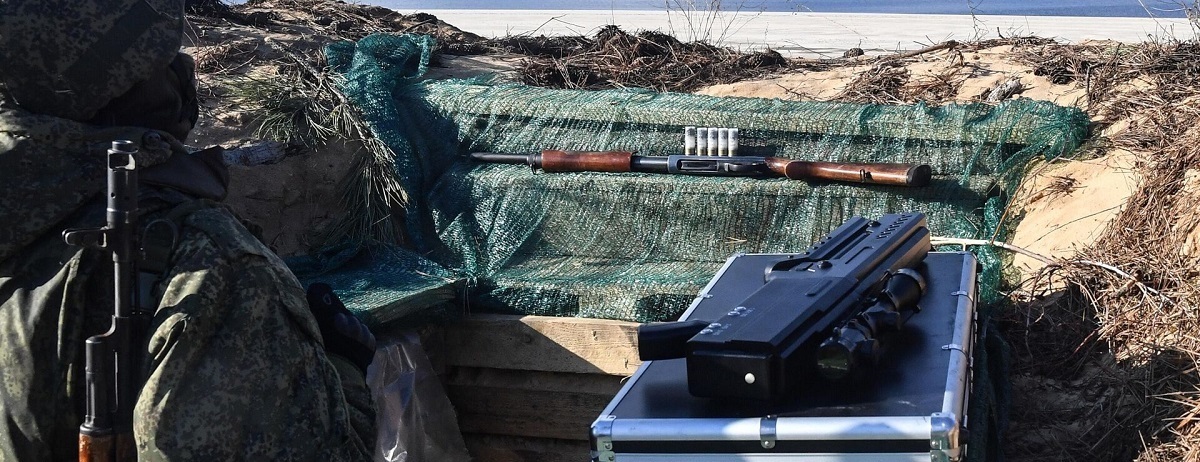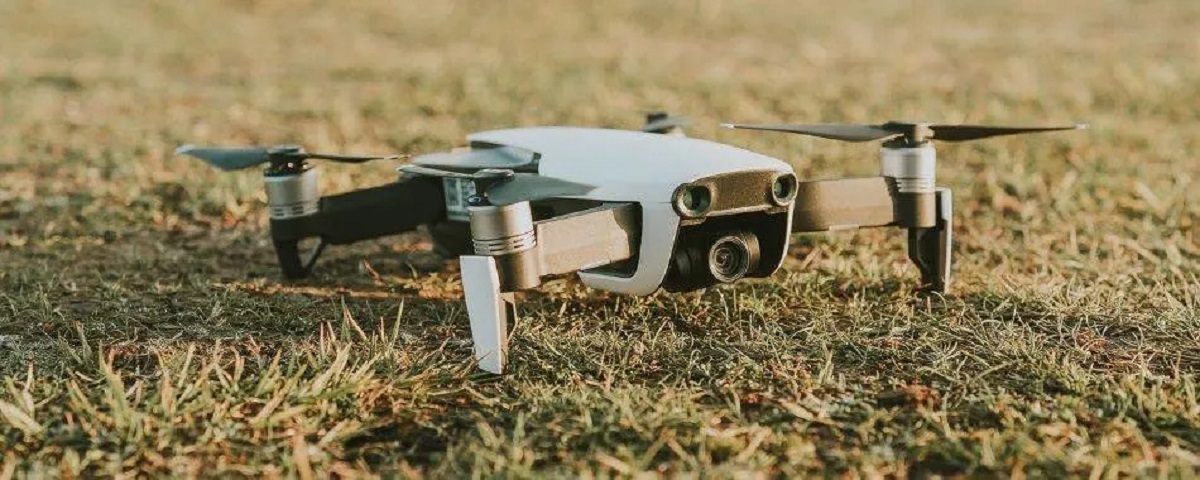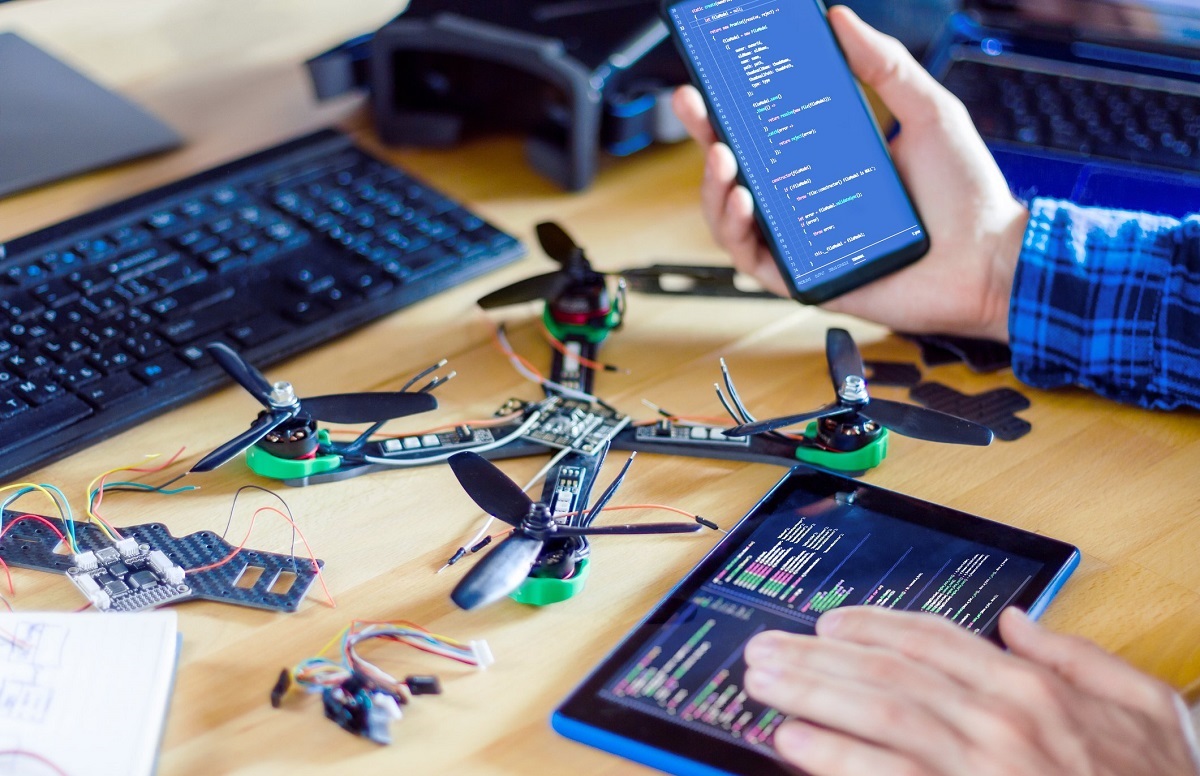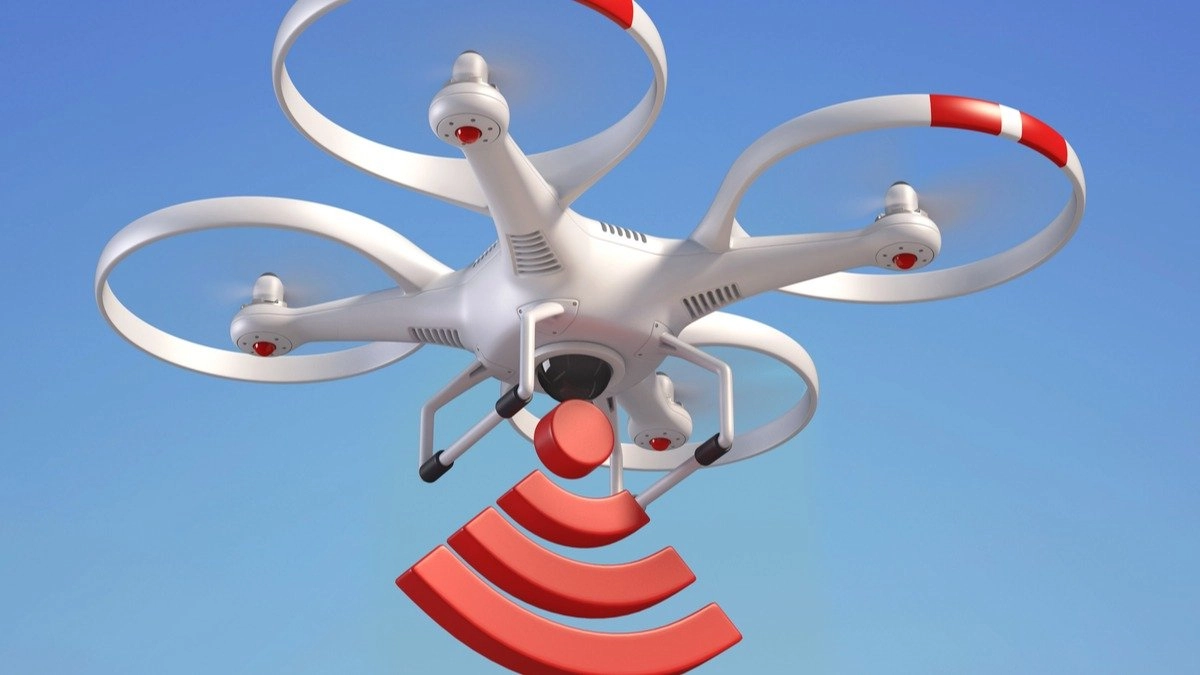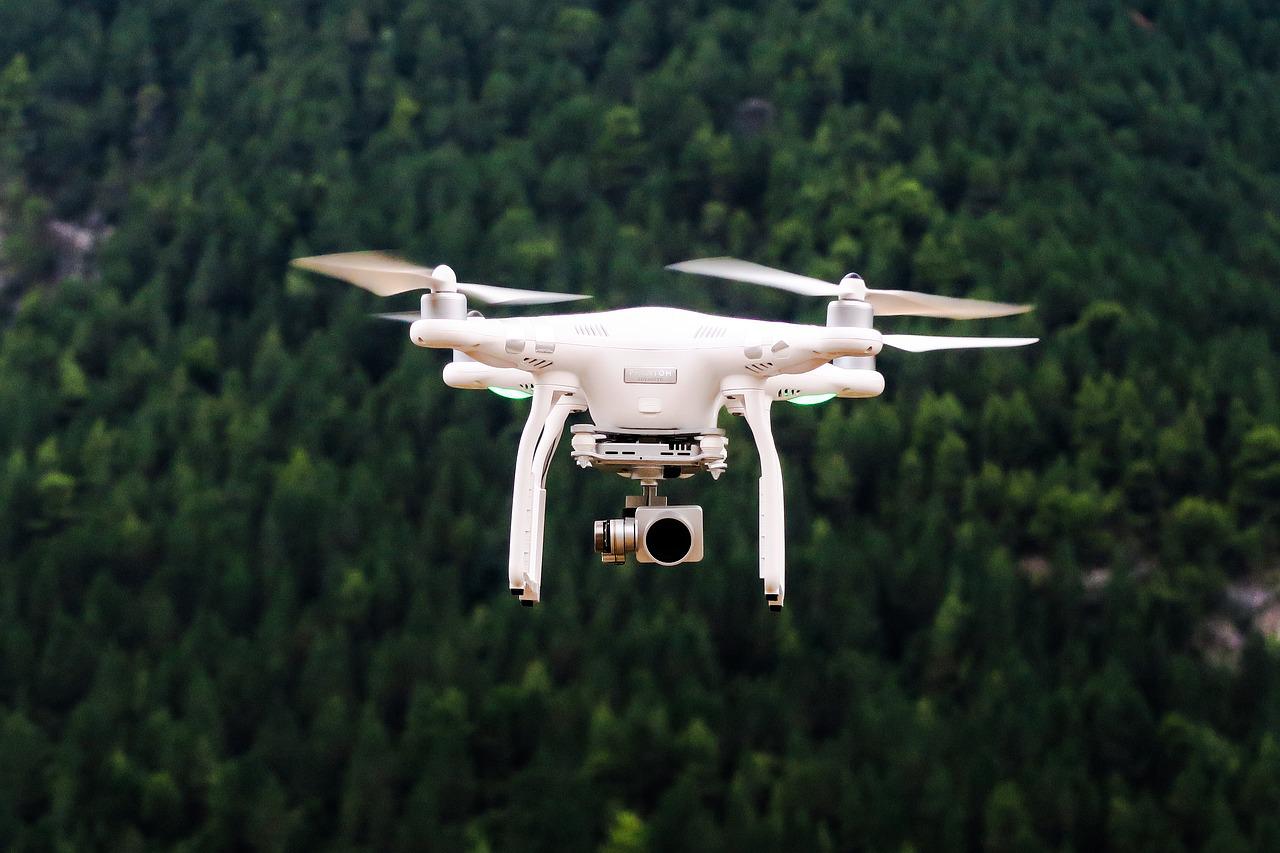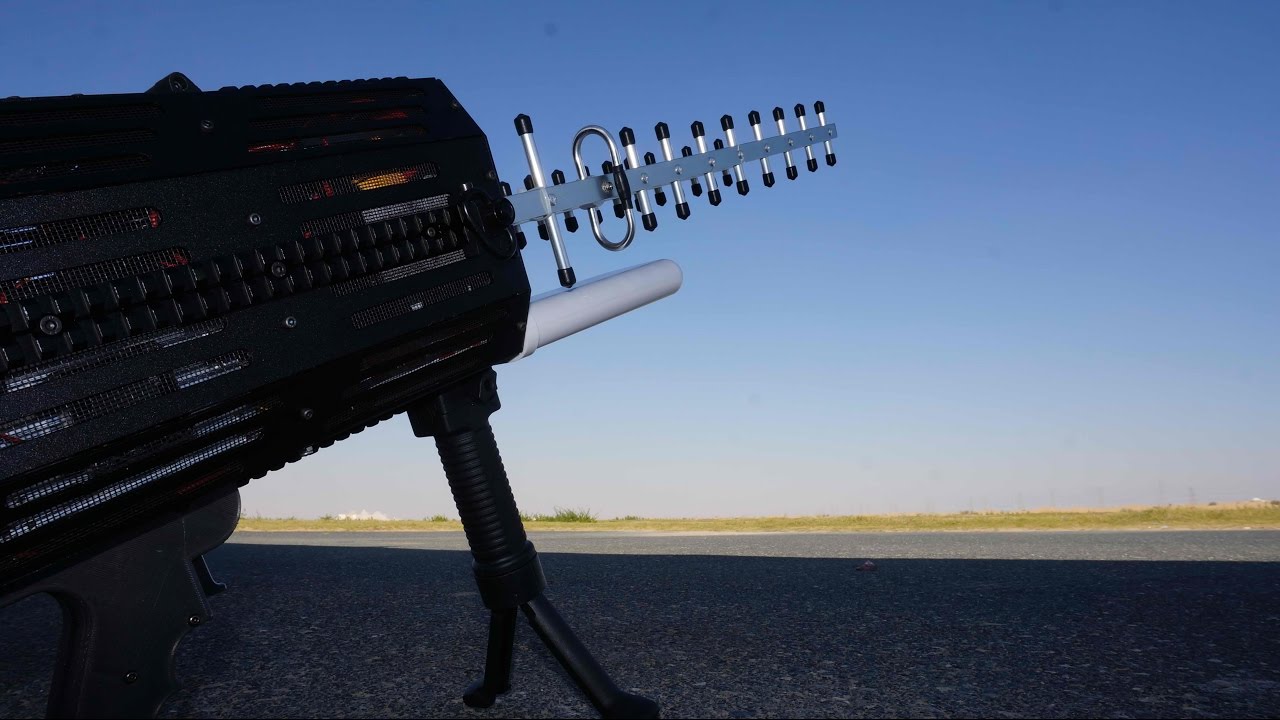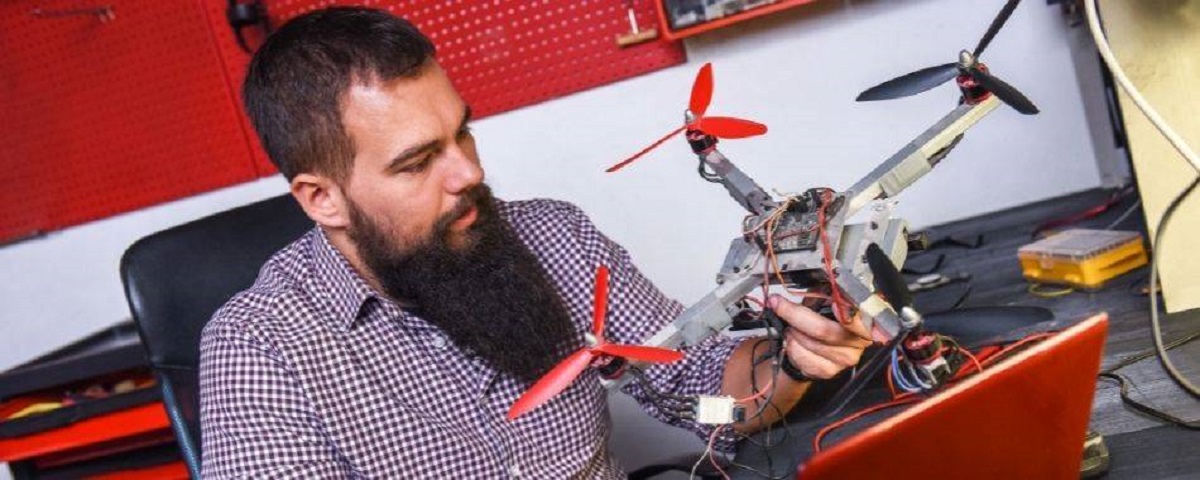Introduction
A kamikaze drone, also known as a suicide drone or a loitering munition, is an unmanned aerial vehicle (UAV) that is specifically designed to carry out a one-time attack on a target. Unlike traditional drones that are used for surveillance or remote strikes, kamikaze drones are intended to be employed as a direct offensive weapon. These drones are capable of carrying explosives or other payloads, and they can be either remotely operated or programmed to autonomously navigate towards their targets.
Kamikaze drones have gained significant attention in recent years due to their increasing use in military applications. They offer a unique advantage by combining the advantages of UAVs with the destructive capabilities of guided missiles. This has led to their adoption by various armed forces around the world. While the concept of a kamikaze drone may seem alarming, its effectiveness and versatility in combat scenarios cannot be denied.
Throughout history, military strategies have evolved to keep up with advancements in technology. Kamikaze drones represent the latest development in this ongoing evolution. This article will delve into the definition of kamikaze drones, explore their history, discuss different types of kamikaze drones, examine their functionality and design, analyze their use in warfare, evaluate their advantages and limitations, and consider their future implications. By understanding the intricacies and capabilities of kamikaze drones, we can gain insights into the future of military tactics and the challenges they pose within the broader scope of conflict management.
Definition of a Kamikaze Drone
A kamikaze drone is an unmanned aerial vehicle (UAV) that is specifically designed to carry out a one-time attack on a target. Unlike traditional drones that are used for surveillance or remote strikes, kamikaze drones are intended to be employed as a direct offensive weapon. These drones are usually equipped with a payload, such as explosives or other destructive materials, which can be detonated upon reaching the target. The term “kamikaze” is derived from the Japanese word for “divine wind,” which refers to the World War II tactic of using suicide pilots to crash their planes into enemy ships.
Kamikaze drones come in various sizes and shapes, ranging from small, handheld devices to larger, fixed-wing aircraft. Some kamikaze drones are designed to be launched from aircraft carriers or other launching platforms, while others can be hand-launched or launched from a ground-based catapult.
What sets kamikaze drones apart from traditional UAVs is their primary function, which is to directly impact or destroy the target. They are typically equipped with advanced guidance systems that allow them to precisely navigate towards their intended objectives. These systems can include GPS, infrared sensors, and image recognition technology.
Furthermore, kamikaze drones can be either remotely operated or operate autonomously. Remotely operated kamikaze drones are controlled by human operators who control the flight path and initiate the attack. Autonomous kamikaze drones, on the other hand, are programmed with predefined targets and mission parameters. Once launched, they navigate and make decisions independently, based on their programming and sensor input.
The concept of kamikaze drones has emerged from the advancements in drone technology and the need for more versatile and effective autonomous weapons. These drones have proven to be a game-changer on the battlefield, enabling military forces to strike targets with precision and minimize the risk to human personnel. However, their deployment and use in warfare have brought forth various ethical and legal considerations that need to be carefully addressed.
History of Kamikaze Drones
The concept of kamikaze drones may seem relatively new, but the idea of using unmanned vehicles for destructive purposes dates back several decades. The first known use of unmanned aerial vehicles in combat can be traced back to World War II. During the war, the Japanese military utilized kamikaze pilots who would intentionally crash their aircraft into enemy ships. This innovative and immensely self-sacrificing tactic was known as the “kamikaze” or “divine wind.”
Fast forward to the 21st century, advancements in technology have allowed for the development of autonomous kamikaze drones, which can carry out similar one-time attacks without the need for human pilots. The idea behind this evolution was to capitalize on the advantages of unmanned systems, such as precision targeting and reduced risk to human life, while preserving the effectiveness of the kamikaze philosophy.
The first documented use of kamikaze drones in modern warfare can be traced back to the conflict between Armenia and Azerbaijan in 2016. Armenia deployed Israeli-made Harop drones, which were classified as loitering munitions, to target Azerbaijani military assets. These kamikaze drones proved to be highly effective, with the ability to loiter above the battlefield for an extended period of time until a suitable target was identified, at which point they would dive and strike with precision.
The success of kamikaze drones in the Armenia-Azerbaijan conflict sparked interest and further development of such technologies by other military forces. In subsequent years, several countries, including the United States, Israel, Turkey, and Russia, among others, have been actively involved in the research and deployment of kamikaze drones.
The use of kamikaze drones has expanded beyond traditional military conflicts. They have also proven useful in counter-terrorism operations, where the ability to accurately target high-value individuals or remove improvised explosive devices (IEDs) without risking human lives is a significant advantage.
With the ongoing advancements in technology, it is expected that kamikaze drones will continue to evolve and play a crucial role in future warfare scenarios. Their effectiveness in combat, coupled with their ability to navigate challenging environments and strike with precision, make them an appealing option for militaries around the world.
However, it is important to note that the use of kamikaze drones also raises ethical concerns and legal implications. The indiscriminate use of such drones or the potential for them to fall into the wrong hands could lead to unintended civilian casualties or be exploited for terrorist attacks. These concerns highlight the need for proper regulation and international agreements to govern the deployment and use of kamikaze drones in armed conflicts.
Types of Kamikaze Drones
Kamikaze drones come in various shapes, sizes, and configurations, each with its specific capabilities and purposes. Here are some of the common types of kamikaze drones:
- Fixed-wing Kamikaze Drones: These drones resemble traditional aircraft, with fixed wings and propulsion systems. They are often larger in size, allowing for longer flight durations and increased payload capacities. Fixed-wing kamikaze drones are primarily used for long-range missions and can be equipped with sophisticated guidance systems for precise targeting.
- Quadcopter Kamikaze Drones: Quadcopters are unmanned aerial vehicles with four rotors, positioned at each corner of the aircraft. They are known for their agility, stability, and ease of control. Quadcopter kamikaze drones are typically smaller in size and offer improved maneuverability, making them suitable for close-range operations and navigating tight spaces.
- UAV Swarm Kamikaze Drones: Swarm drones refer to a group of multiple drones that operate collaboratively. UAV swarm kamikaze drones are designed to coordinate their movements, share information, and collectively attack a target. Swarm drones can overwhelm enemy defenses and provide a more significant impact through synchronized and coordinated strikes.
- Vertical Takeoff and Landing (VTOL) Kamikaze Drones: VTOL kamikaze drones are capable of taking off and landing vertically, eliminating the need for a runway or launching platform. These drones combine the advantages of fixed-wing and quadcopter designs, allowing for both long-range flight and precise vertical landings in confined spaces. VTOL kamikaze drones offer flexibility in deployment and can operate in various environments.
- Anti-Ship Kamikaze Drones: These specialized kamikaze drones are specifically designed to target naval vessels. They are equipped with powerful explosives and advanced guidance systems to penetrate the defenses of ships and inflict maximum damage. Anti-ship kamikaze drones can be effective in naval warfare scenarios, where traditional naval vessels may be limited in their ability to counter such attacks.
It is important to note that these categories are not definitive, and there are many variations and hybrid designs of kamikaze drones currently under development. The choice of kamikaze drone type depends on the specific mission objectives, operational requirements, and the nature of the target or enemy forces involved.
As technology continues to advance, we can expect further innovation and the emergence of new types of kamikaze drones, catering to specific purposes and enhancing the capabilities of modern military forces.
Functionality and Design of Kamikaze Drones
Kamikaze drones are designed with specific functionality in mind, combining the maneuverability of traditional drones with the destructive capabilities of guided munitions. The functionality and design of kamikaze drones play a crucial role in their effectiveness and ability to carry out targeted attacks. Here are key aspects of their functionality and design:
Guidance Systems: Kamikaze drones are equipped with advanced guidance systems that enable them to navigate towards their targets with precision. These guidance systems may include Global Positioning System (GPS) receivers, sensors, image recognition technology, or even pre-programmed routes. The drones use these systems to identify and track the target, making in-flight adjustments to ensure accurate delivery of the payload.
Autonomous or Remote Operation: Kamikaze drones can be operated in two primary ways: either autonomously or remotely. Autonomously operated kamikaze drones are pre-programmed with instructions and mission parameters, allowing them to operate independently once launched. They use their onboard systems to identify and engage targets before initiating the attack. Remotely operated kamikaze drones, on the other hand, are controlled by human operators who are responsible for controlling the flight path and triggering the attack when the target is in range.
Explosive Payload: Kamikaze drones are typically equipped with explosive payloads that can be detonated upon reaching the target. These payloads range from conventional explosives to more advanced warheads, depending on the mission requirements. The explosive payload ensures a high probability of mission success and maximum damage to the target.
Loitering Capability: Many kamikaze drones possess loitering capabilities, allowing them to linger in a particular area until a suitable target is identified. This feature increases their chances of finding high-value targets or opportune moments to strike. The ability to loiter also helps conserve energy and extend the operational duration of the kamikaze drone.
Size and Shape Variations: Kamikaze drones come in various sizes and shapes to cater to different operational needs. Some are small and compact, designed for close-range engagements and stealthy operations. Others are larger and more robust, capable of carrying heavier payloads over longer distances. The size and shape of a kamikaze drone influence its flight characteristics, range, and payload capacity.
Secure Communication: Kamikaze drones often employ secure communication channels to ensure that their control signals are not intercepted or tampered with by adversaries. Encryption technologies can be used to safeguard the control link between the operator and the drone, minimizing the risk of unauthorized access or interference.
The functionality and design of kamikaze drones continue to evolve as technology advances. The future may see further enhancements, such as improved autonomous capabilities, better target recognition algorithms, and increased range and endurance. These advancements will contribute to the effectiveness and versatility of kamikaze drones in future combat scenarios.
Use of Kamikaze Drones in Warfare
Kamikaze drones have emerged as a formidable weapon in modern warfare, offering unique advantages and capabilities that traditional weapons systems may lack. Their deployment introduces a new dynamic on the battlefield and changes the tactics and strategies employed by military forces. Here are some key aspects of the use of kamikaze drones in warfare:
Precision Targeting: Kamikaze drones allow for precise targeting of enemy assets or high-value individuals. Their advanced guidance systems, coupled with real-time intelligence, enable them to navigate through complex environments and hit specific targets with a high degree of accuracy. This precision targeting minimizes collateral damage and reduces the risk of causing harm to innocent civilians.
Avoidance of Friendly Casualties: One of the significant advantages of kamikaze drones is their ability to carry out attacks without putting human lives at risk. This mitigates the potential for friendly casualties and allows military forces to engage in more targeted and efficient operations. Since kamikaze drones do not require a pilot, they can operate in high-risk areas or perform missions that may be too dangerous for manned aircraft or ground forces.
Surveillance and Reconnaissance: Kamikaze drones can be equipped with advanced sensors and imaging technologies, enabling them to perform surveillance and reconnaissance tasks. Before initiating an attack, these drones can gather valuable intelligence on enemy positions, movements, and vulnerabilities. This information can then be analyzed and used to plan subsequent operations or provide real-time situational awareness to commanders on the ground.
Disruption of Enemy Operations: Kamikaze drones excel at disrupting enemy operations by targeting critical infrastructure, command centers, or logistics support elements. By eliminating or incapacitating key targets, kamikaze drones can hinder an adversary’s ability to function effectively on the battlefield. This disruption can significantly impact an enemy’s ability to wage war and provides an advantage to the attacking forces.
Psychological Impact: The use of kamikaze drones can have a psychological impact on both enemy combatants and civilians. The threat of an imminent kamikaze attack can sow fear and uncertainty among enemy forces, potentially leading to reduced morale and impaired decision-making. Additionally, the visible destruction caused by kamikaze drone attacks can leave a lasting impression on the local population, influencing their perceptions of the conflict and potentially swaying their support.
It is important to consider the ethical and legal implications surrounding the use of kamikaze drones in warfare. The increasing autonomy of these systems raises questions about responsibility and accountability for their actions. Additionally, potential concerns regarding the targeted killings and unintended consequences of their use must be addressed to ensure the adherence to international humanitarian laws and norms.
As military forces continue to incorporate kamikaze drones into their arsenals, the strategic landscape and dynamics of warfare are likely to undergo significant changes. The adaptability, precision, and effectiveness of kamikaze drones make them a valuable asset on the modern battlefield, reshaping military tactics and strategies for years to come.
Advantages of Kamikaze Drones
Kamikaze drones offer a range of advantages that make them a compelling choice for military applications. Their unique capabilities address specific challenges faced in warfare and provide valuable benefits for military forces. Here are some key advantages of kamikaze drones:
Precision and Accuracy: Kamikaze drones are equipped with advanced guidance systems that allow them to precisely navigate towards their targets. This precision targeting minimizes collateral damage and increases the likelihood of a successful mission. The ability to strike with accuracy is crucial in situations where minimizing civilian casualties and infrastructure damage is of utmost importance.
Reduced Risk to Human Lives: By removing the need for a human pilot, kamikaze drones significantly reduce the risk to human life during combat operations. These autonomous or remotely operated drones can venture into hazardous areas without putting personnel in harm’s way. This advantage allows military forces to conduct operations in high-risk environments, gather intelligence, and engage targets without risking the lives of their personnel.
Extended Persistence: Kamikaze drones can loiter in the air for extended periods, monitoring the battlefield or waiting for the optimal time to strike. This persistence allows for enhanced situational awareness and the ability to adapt to changing circumstances. These drones can observe enemy movements, gather intelligence, and provide real-time updates to commanders, enabling better decision-making and coordination of military operations.
Flexibility and Versatility: Kamikaze drones come in various sizes and configurations, offering flexibility and versatility in their deployment. They can be launched from different platforms such as aircraft carriers, ground-based launchers, or even hand-launched. The ability to choose the appropriate drone for a specific mission allows military forces to tailor their operations to the task at hand, whether it be surveillance, targeted strikes, or disruption of enemy activities.
Cost-Effectiveness: Kamikaze drones are often more cost-effective than traditional manned aircraft or guided missiles. They require fewer resources to produce, operate, and maintain, making them a financially attractive choice for military forces. The lower costs associated with kamikaze drones allow for increased availability and scalability, enabling military units to deploy them in larger numbers and conduct multiple simultaneous operations.
Psychological Impact: The deployment of kamikaze drones can have a psychological impact on both enemies and civilians. The constant threat of an impending kamikaze attack can sow fear and uncertainty, affecting enemy morale and decision-making processes. Moreover, the visible and devastating effects of kamikaze drone strikes can leave a lasting impression on the local population, potentially swaying their attitudes and support towards the attacking force.
Overall, the advantages of kamikaze drones contribute to increased operational efficiency, reduced risks to personnel, enhanced precision, and cost-effective warfare. These advantages make kamikaze drones a compelling choice for military forces seeking to achieve their objectives while minimizing collateral damage and ensuring the safety of their personnel.
Limitations and Concerns with Kamikaze Drones
While kamikaze drones offer significant advantages in warfare, their use also comes with certain limitations and concerns that must be carefully addressed. These limitations and concerns include:
Limited Range and Endurance: Kamikaze drones typically have shorter operational ranges and limited endurance compared to traditional long-range aircraft or missiles. Their smaller size and payload capacities restrict their ability to travel long distances or remain in the air for extended periods. This limitation may require closer proximity to the target and necessitate logistical considerations for their effective deployment.
Vulnerability to Countermeasures: Kamikaze drones, like any other technology, are susceptible to countermeasures employed by enemy forces. Advancements in air defense systems, such as anti-drone technologies or jamming devices, pose a significant challenge to the successful deployment of kamikaze drones. Countermeasures can disrupt or neutralize the communication link between the operator and the drone, rendering them ineffective or even causing them to be captured or destroyed.
Legal and Ethical Concerns: The use of kamikaze drones introduces a range of legal and ethical concerns. The autonomous nature of these drones raises questions about accountability and adherence to international humanitarian laws. Determining responsibility for their actions, especially in cases of unintended civilian casualties or humanitarian law violations, poses challenges that require careful consideration and regulation.
Potential for Misuse and Proliferation: The proliferation of kamikaze drone technology raises concerns about their potential misuse by non-state actors or malicious entities. The relative ease of acquiring and operating these systems compared to larger military assets increases the risk of unauthorized or illicit use. The potential for kamikaze drones to be repurposed for terrorist attacks or other nefarious activities requires robust policies and regulations to prevent their misuse.
Reliance on Technology: Kamikaze drones heavily rely on advanced technology, including guidance systems, sensors, and encryption. Any technological failure or vulnerability in these systems could present operational challenges or compromise the effectiveness of the drones. Dependence on technology also necessitates ongoing research and development to stay ahead of adversarial efforts to exploit vulnerabilities or develop effective countermeasures.
Risk of Escalation: The use of kamikaze drones, particularly in conflict zones, carries the risk of escalation. The ability to target specific assets or individuals, without the need for a conventional military presence, may lead to unintended consequences or a disproportionate response from adversaries. The potential for an escalating cycle of violence underscores the need for caution and strategic considerations when deploying kamikaze drones in warfare.
Addressing the limitations and concerns associated with kamikaze drones requires a comprehensive approach that involves policy-making, technological advancements, and international cooperation. Striking the right balance between exploiting their advantages and mitigating the associated risks is crucial in integrating kamikaze drones into military operations responsibly and ethically.
Future Implications of Kamikaze Drones
The increasing prominence of kamikaze drones in modern warfare has significant implications for the future of military operations and conflict dynamics. As technology continues to advance, kamikaze drones are likely to evolve and impact various aspects of warfare. Here are some potential future implications of kamikaze drones:
Technological Innovation: The development and deployment of kamikaze drones are driving technological innovation in the military sector. As military forces seek to enhance the capabilities of these systems, advancements are anticipated in areas such as artificial intelligence, sensor technology, autonomy, miniaturization, and communication systems. These advancements will not only improve the capabilities of kamikaze drones but also have broader implications for the development of unmanned systems in general.
Shift in Military Tactics: The integration of kamikaze drones into military operations is likely to necessitate a shift in traditional tactics and strategies. The ability to conduct precise and targeted strikes with reduced risk to personnel will influence how military forces plan and execute missions. This shift may involve a greater emphasis on intelligence gathering, integration of drones into combined-arms operations, and flexibility in deploying forces to counter kamikaze drone threats.
Continued Ethical and Legal Concerns: With the advancement of kamikaze drone technology, ethical and legal concerns will continue to arise. The autonomous nature of these drones raises questions about accountability, adherence to international humanitarian law, and the moral implications of deploying autonomous weapons. Policymakers, military leaders, and the international community will need to work together to address these concerns and establish clear guidelines and regulations governing the use of kamikaze drones.
Increased Importance of Countermeasures: As kamikaze drones become more prevalent, the importance of effective countermeasures will also increase. This includes the development and deployment of anti-drone technologies, jamming systems, and advanced air defense capabilities. Military forces will need to invest in research and development to stay ahead of evolving kamikaze drone threats, ensuring they can effectively neutralize or defend against these systems.
Impact on Civilian Populations: The use of kamikaze drones may have implications for civilian populations caught in conflict zones. The precision targeting of these drones aims to minimize collateral damage, but the potential for unintended civilian casualties remains a concern. It will be crucial for military forces to prioritize the protection of civilian lives and ensure that the use of kamikaze drones aligns with international humanitarian law and principles of proportionality and distinction.
Broader Adoption: As kamikaze drone technology matures and becomes more accessible, it is likely to be adopted by a broader range of actors beyond state militaries. Non-state groups and even individuals could potentially acquire and deploy kamikaze drones, posing new challenges for security and stability. This necessitates the development of comprehensive international agreements and regulations to prevent misuse and ensure responsible use of these technologies.
The future implications of kamikaze drones are dynamic and multifaceted, with both positive advancements and potential risks. It is essential to strike a balance between harnessing the advantages of this technology while addressing the associated challenges. By staying vigilant, proactive, and responsible in the development and use of kamikaze drones, the international community can navigate the complex terrain of modern warfare and ensure its compatibility with ethical and legal frameworks.
Conclusion
Kamikaze drones have emerged as a game-changing technology in modern warfare, offering unique advantages and capabilities. These unmanned aerial vehicles (UAVs) designed for one-time attacks provide precision targeting, reduced risk to human lives, extended persistence, flexibility, cost-effectiveness, and psychological impact on the battlefield. They have the potential to reshape military tactics, enhance situational awareness, and disrupt enemy operations. However, their use also raises concerns and limitations that must be carefully addressed.
As kamikaze drone technology continues to evolve, the future implications are wide-ranging. Technological innovation will drive improvements in guidance systems, sensor technology, autonomy, and communication, leading to more advanced and capable drones. The integration of kamikaze drones into military operations will necessitate a shift in traditional tactics, placing a greater emphasis on intelligence gathering and adaptability.
Ethical and legal concerns surrounding kamikaze drones persist, emphasizing the need for accountability, adherence to international humanitarian law, and ongoing regulation. Countermeasures to combat kamikaze drones will also evolve, with the development of anti-drone technologies and enhanced air defense capabilities.
Furthermore, the impact on civilian populations and the potential for broader adoption by non-state actors highlight the importance of protecting innocent lives and establishing comprehensive international agreements and regulations.
In conclusion, kamikaze drones are at the forefront of military innovation, offering both advantages and challenges. A responsible and ethical approach to their development, deployment, and regulation is paramount to ensure their integration into warfare is aligned with humanitarian principles. As technology progresses and global security landscapes evolve, the continued assessment and understanding of kamikaze drones will be crucial in navigating the complex dynamics of modern warfare.









